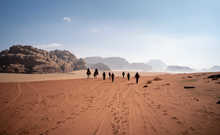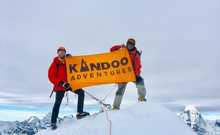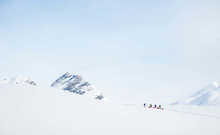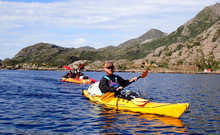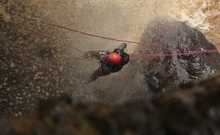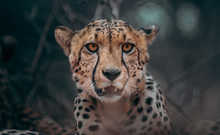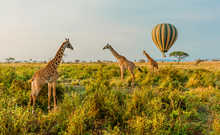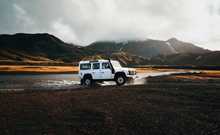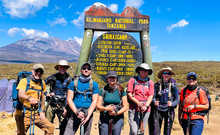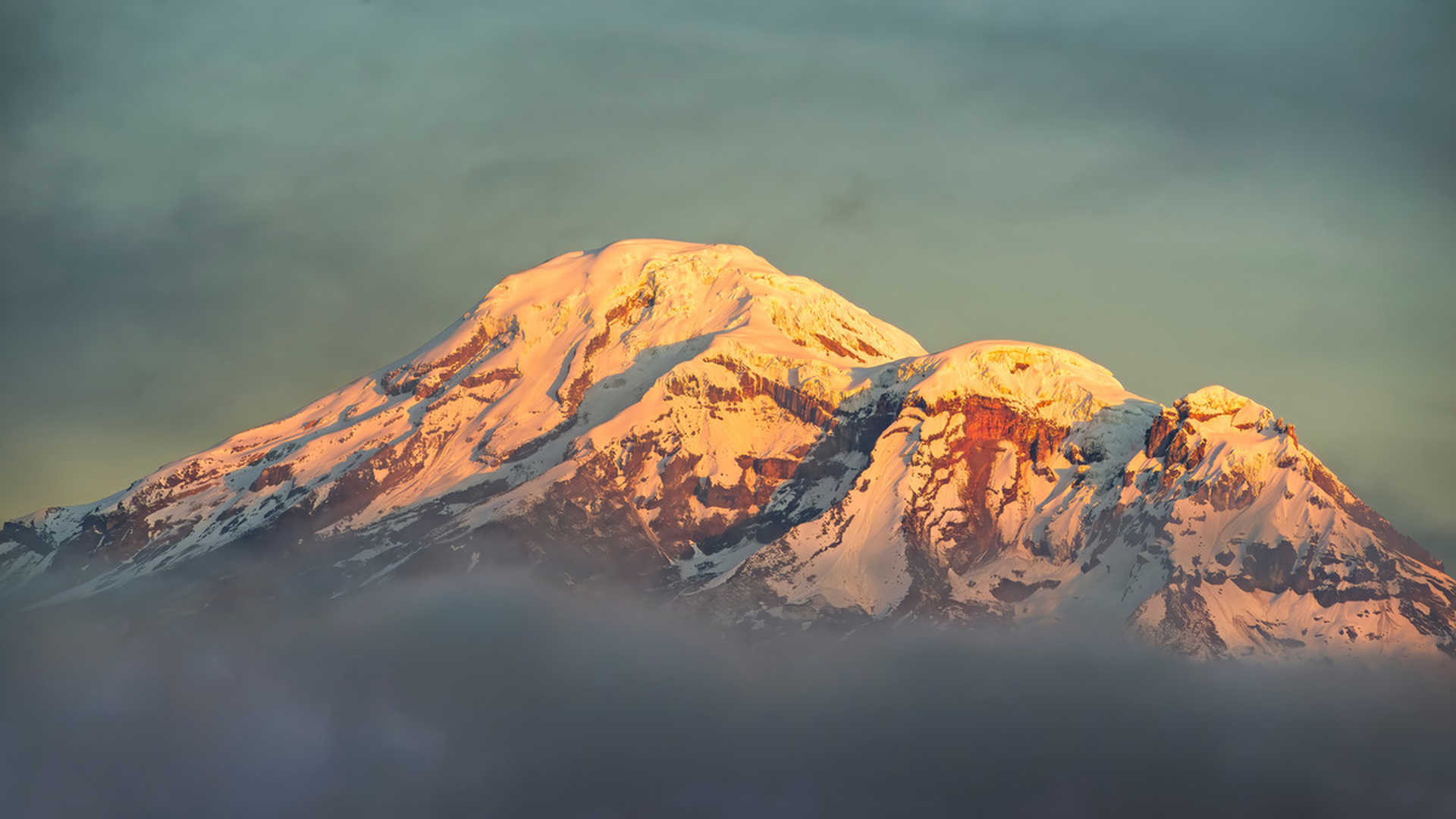Ecuador is an adventure travel paradise, offering epic experiences from hiking volcanoes and exploring the Amazon jungle to diving with wildlife in the Galápagos Islands. It's capital city, Quito, sits at an elevation of 2850m and boasts well-preserved colonial architecture including the famous Golden Church. The region is known for it's tectonic nature and is home to over 30 volcanoes, many of which are active and part of the Andean mountain range. The dramatic nature of these formidable theatres, along with the friendly locals, makes Ecuador one of South America's most desirable destinations and one of the few places where you can still see snow on the Equator and reach the tallest point, from core to summit, on earth. Our trips in Ecuador offer a physical challenge amidst a country of colours and culture.
You will need to fly into Mariscal Sucre International Airport (UIO) in Quito on Day 1 of your trip.
For US travellers, there are direct flights to Mariscal Sucre airport with American Airlines, LATAM and Delta from Miami and Atlanta. They also offer services from other main hubs such as New York, San Francisco and Dallas, via Miami. Copa Airlines also offer a service to Quito via Panama from San Francisco and Los Angeles.
From the UK, Delta offer flights from London Heathrow via Atlanta (ATL) and Iberia and British Airways have flights via Madrid (MAD) from all London airports. For UK guests who live further north, KLM have flights via Amsterdam (AMS) from Manchester, Glasgow, Birmingham and other main hubs.
Upon arrival at the airport, once you have exited the Arrivals area, keep an eye out for our driver holding a "KANDOO" sign. Our hotel is a 50 minute drive from the airport.
If you are changing airlines or re-checking your luggage at an airport on route, please ensure you leave a minimum of 3 hours between flights. This will account for any delays on arrival, travel time across airports (this can take longer than you think) and time taken to re-check baggage.
Ecuador trips
PEAKS OF ECUADOR | A combination of Ecuador's finest; the créme de la créme of volcanic climbs, providing a gritty, engaging experience from the ashen, scree covered lower slopes to the crusty, snow-capped peaks. Climb the triple crown in Ecuador; Cotopaxi, Cayambe and Chimborazo. A tough challenge in which you will reach the summit of the highest point - from core to summit - on earth! Gradually acclimatise as you embark on this journey from the lower peak of Cayambe, to the picturesque slopes of Cotopaxi and up the dizzying heights of Chimborazo, standing at 6310m. These giants dominate the Ecuadorian skylines and are a great challenge for those who have trekked to altitude before and are looking for their next adventure.
ECUADOR VOLCANIC ADVENTURES | Trek through the volcanic highlights of the rugged Ecuadorian landscape, culminating in the perfectly conical shaped Cotopaxi, the highest volcano in the world, standing at 5897m! This 10 day adventure takes us from the deep blue hues of the Quilotoa Crater, to the rust coloured, lower slopes of Chimborazo, embracing the vibrant sights and sounds of Baños and pushing hard to Cotopaxi's icy crater. An adventure of a lifetime, experiencing a side of Ecuador that many don't get to see.
When to trek
You can find detailed advice on when to trek in our Ecuador Travel Guide.
Ecuador only has two seasons, and they are becoming less and less prominent as our world changes. With sun almost all year round in the mornings, an occasional rain may fall during the wet season, which is generally between March and April. However, contrary to being a nuisance, the rain brings a coolness to the air and calms the heat from the sun. We run our open group trips from November to February and June-August, as for Cotopaxi and Chimborazo climbing, June to August is when precipitation is at it's lowest, so there is the greatest chance of cloud free summits.
Training for your trek in Ecuador
Trekking up volcanoes in Ecuador often catches people out with it's difficulty. These active giants are often covered in a soft, dusty scree which can feel like walking uphill over sand dunes. And to add to this the high altitudes you will be reaching, where your oxygen levels will be depleting as you head up, there is plenty to train for! The lack of oxygen in the air has a range of effects on the human body, but the most obvious is breathlessness. At Chimborazo Base Camp there is half the oxygen content in the air that there is at sea level. This makes any exertion a lot harder, so the most important thing you can do is go slowly. Exerting yourself too hard is a great way to bring on altitude sickness.
Not all our trips take on a high altitude peak, but all of them are active and challenging, so even if you are heading out on our Ecuador Multi Activity trip, we would recommend spending the 3-4 months prior, taking in some form of training in preparation. The best way to prepare is to get out in your local hills, and cover as many miles as you can. You will be trekking on undulating terrain over several consecutive days and it is important for your muscles and joints to be prepared for this. However, we understand the hills are not easily accessible to everyone, so if the gym is a more achievable option for you, then really think about working your legs, glutes and back muscles to get you in good shape ready for your Ecuador adventure. For more ideas on how to train visit our
Ecuador Training Guide. Accommodation and food in Ecuador
Hotels
All of our pre- and post- climb accommodation is based in Quito. Where your hotel basis is B&B, you can usually purchase snacks or meals at the hotel, which can be paid in US Dollars. When you arrive at the hotel, take a moment to familiarise yourself with the layout and the procedures in the event of a fire, especially your escape routes and fire exits.
Guesthouses of Hosteria
These are small, simple hotels with basic twin or double rooms. Most of the guesthouses we use have en-suite rooms however, dependant on the location, some have shared bathrooms. Examples of accommodations we use are:
Amazon homestay
When staying in the Amazon we will be in a homestay run by a wonderful indigenous family. For this night rooms will be on a twin share basis and there will be separate shared male and female bathrooms.
Whilst on the volcanoes, we spend nights in mountains
refuges. Mountain refuges are basic mixed gender dormitory style
rooms, with shared amenities such as dining area and toilet facilities. These
are not designed to be luxury quarters band we recommend bringing ear plugs
particularly for these nights. The beds all have thick mattresses and we will
provide you with a warm, 4 season Husky sleeping bag as temperatures can reach -15 in
the huts.
Camping
We only have one night camping on any of our trips and this is at "El Castillo" on Chimborazo, where you will
be staying in high altitude mountain tents to ensure you stay warm, dry and
comfortable. Please bear in mind, these are proper mountain tents, designed to
cope with extreme conditions so don’t expect to be able to stand up and walk
around inside! We will provide you with a sleeping mat and sleeping bag for
your night camping. You will take your meals in a group dining tent.
Toilets
The toilet situation is something a lot of our guests want to know about! In Ecuador, the hotels, guesthouses and hosteria we use all have western flushing toilets, however, the sewerage system doesn't yet have the capacity for lots of toilet paper, so whilst the flush can be used for your business, generally a bin will be provided next to the toilet for any toilet roll to go in. Locals will often use a water bucket or hose (if one is provided) rather than toilet roll. If you need the toilet whilst trekking, this will be a case of finding somewhere hidden, off the path and going wild. Talk about a scenic toilet break!
Budget
To see the latest conversion rates visit
xe.com.
The main currency in Ecuador is the US Dollar (USD). These can be easily exchanged before travelling. It is very important that US bills be new (no more than 10 years old), crisp and untorn. You will also be able to exchange money upon arrival in Quito. Most hotels, banks and exchange bureaus will exchange money for you and our guides are happy to assist you to do this. Please note that whilst you are out of the big cities there won't be anywhere for you to exchange money, so we would recommend doing this before leaving Quito. Credit cards are accepted in most restaurants and shops in the cities however in the smaller towns and villages they will be useless, so please make sure to have some cash on you as well. If you are relying on a credit or debit card for emergency funds, make sure you tell your card issuer that you will be using it abroad, or you may find that it won't work when you really need it.
In Quito, the price for a taxi generally start at $2 as abase fee, then the charge is around 1.75 per km after this. Uber is also available. Another option is to travel by bus, which typically costs between $10-$15 per person. A meal will vary in cost depending upon where you choose to eat. A midrange meal in the city will generally cost around $15 per person. Street food and local cafes tend to offer a slightly cheaper option coming in at around $5, or you can opt for a higher end restaurant which will likely be around $30pp per meal. Souvenirs can vary depending on the quality of the items you choose, but they don't have to break the bank, particularly if you are prepared to haggle down the price.
Tips
Tipping customs vary all over the world and can be very
confusing when travelling to a new country. Tipping is completely voluntary in
Ecuador, and at your discretion. In restaurants and bars there is an official
10% service tax. For the team on your climb, the decision on how much to
tip should be determined by how well they serve you whilst you are on your
adventure.
Tips should be made in US Dollars and we recommend
allocating the following per trekker per day for your tips:
Guides - US$10
Drivers - US$5


